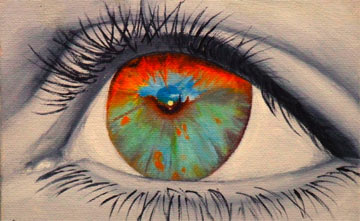
Many thanks to Yolanda, MK, William, and Suzanne for their responses to our third post last week. To continue the conversation, I’d like to address some of the comments made and then push some ideas further….
“Finding a Balance (Part 1),” last week’s post, was written to inspire conversation and ideas about where teaching students to engage with and discuss art fits into the curricula we already teach. Yolanda commented that talking about art after students create something is perhaps the best place to start, since students can reflect on their process and will “have more to bring to the table.” I agree that having experience with media will allow students more options when it comes to discussing and analyzing art. Students are more prepared to discuss their art and the works of others if they have some experience with the materials. For example, students will often dismiss installation art as “decorative” until they have gone through the steps to create an installation themselves. Creating a work in the spirit of Jackson Pollock is just “splattering paint all over the place” until students try to come up with a composition they are satisfied with.
William stated in his post that “many of those making critical decisions about education have little understanding of what art is” and how it connects to human experience and aesthetic expression, which is true. Art educators aren’t saddled with standardized testing and the joys that go with preparing for exam after exam, but this also means that an introductory studio art course can be wildly different from school to school. We not only are faced with teaching those that make the critical decisions about how our work is interconnected to life itself, but we’re also faced with the challenge of finding a balance when it comes to making art with students and teaching them to engage with art through speaking and writing about it.
MK mentioned that since we are “bombarded with images” every day, it’s critical for students to be able to understand what they encounter. This is a central focus of visual culture studies, which has broadened and become more popular in recent years. MK goes on to say that “the ideal situation involves teaching students the means of creation through fundamentals, foundations and techniques in concert with a solid exploration and rich discussion of the continuum of art history up to now.” But I must ask, what ARE the fundamentals at this point? Many educators in K-12 and even university-level education will refer to the elements and principles of design, but, as Olivia Gude has written, is it time to redefine the elements and principles of design we were taught? Are the principles of design even adequate in a world of art that uses appropriation, juxtaposition, and layering of imagery on a regular basis? Are the seven elements of design complete without the element of time, for example, that is a part of so many contemporary works of art?
Both Suzanne and MK discussed the importance of asking good questions and developing the student’s critical eye in order to have a positive effect on the work they create. Here too, I agree completely. Asking good questions as we work in our classrooms and studios can help students take the next step in a work without feeling pressured to “do what the teacher wants” or come up with a single right answer.
If we are to create an integrated approach that addresses making and understanding art in our classes, doesn’t something have to give? We have a set amount of time with our students each semester, and unless we teach an art history or criticism-based course, we are usually quite involved in art-making. “Finding a Balance (Part 1)” asked, and I suppose I’m still asking, whether we can/should integrate more conversation and discussion about art into courses that are predominantly about making art? Anyone who teaches art, especially on the K-12 level, understands that time is valuable and we have to make many decisions about how that time is spent—when to organize a critique, how to run a class discussion, when to ask students to reflect on their work in writing, etc. While it’s often easier to allow students ample time to make a variety of art, are we up for the challenge of breaking down some of the misunderstandings students (and we ourselves) have about contemporary art in order to create more meaningful work?
What constitutes an “integrated approach” at this point, with all we know related to the history of art and about how contemporary art is being made today?
Untitled illustration by Lauren Beltramo, age 17



